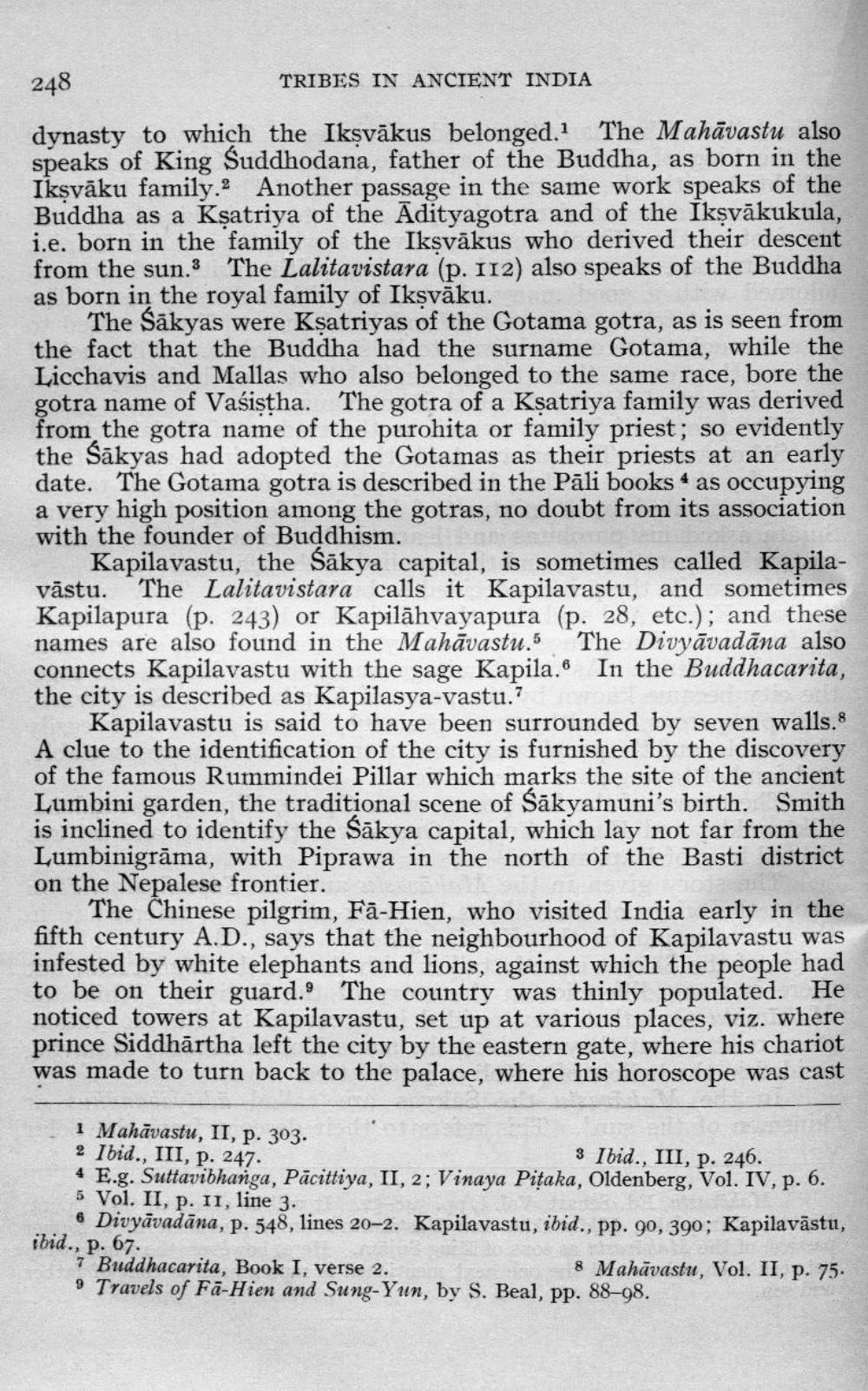________________
248
TRIBES IN ANCIENT INDIA dynasty to which the Ikşvākus belonged. The Mahāvastu also speaks of King Suddhodana, father of the Buddha, as born in the Iksvāku family. Another passage in the same work speaks of the Buddha as a Ksatriya of the Adityagotra and of the Ikşvākukula, i.e. born in the family of the Iksvākus who derived their descent from the sun.3 The Lalitavistara (p. 112) also speaks of the Buddha as born in the royal family of Iksvāku.
The Sākyas were Ksatriyas of the Gotama gotra, as is seen from the fact that the Buddha had the surname Gotama, while the Licchayis and Mallas who also belonged to the same race, bore the gotra name of Vasistha. The gotra of a Ksatriya family was derived from the gotra name of the purohita or family priest; so evidently the Sākyas had adopted the Gotamas as their priests at an early date. The Gotama gotra is described in the Pāli books * as occupying a very high position among the gotras, no doubt from its association with the founder of Buddhism.
Kapilavastu, the Sākya capital, is sometimes called Kapilavāstu. The Lalitavistara calls it Kapilavastu, and sometimes Kapilapura (p. 243) or Kapilāhvayapura (p. 28, etc.); and these names are also found in the Mahāvastu. The Divyāvadāna also connects Kapilavastu with the sage Kapila.6 In the Buddhacarita, the city is described as Kapilasya-vastu.?
Kapilavastu is said to have been surrounded by seven walls. 8 A clue to the identification of the city is furnished by the discovery of the famous Rummindei Pillar which marks the site of the ancient Lumbini garden, the traditional scene of Sākyamuni's birth. Smith is inclined to identify the Sākya capital, which lay not far from the Lumbinigrāma, with Piprawa in the north of the Basti district on the Nepalese frontier.
The Chinese pilgrim, Fā-Hien, who visited India early in the fifth century A.D., says that the neighbourhood of Kapilavastu was infested by white elephants and lions, against which the people had to be on their guard.9 The country was thinly populated. He noticed towers at Kapilavastu, set up at various places, viz. where prince Siddhārtha left the city by the eastern gate, where his chariot was made to turn back to the palace, where his horoscope was cast
1 Mahāvastu, II, p. 303. 2 Ibid., III, p. 247.
3 Ibid., III, p. 246. 4 E.g. Suttavibhanga, Pacittiya, II, 2; Vinaya Pitaka, Oldenberg, Vol. IV, p. 6. 5 Vol. II, p. II, line 3.
6 Divyāvadāna, p. 548, lines 20-2. Kapilavastu, ibid., pp. 90, 390; Kapilavāstu, ibid., p. 67. 7 Buddhacarita, Book I, verse 2.
8 Mahāvastu, Vol. II, p. 75. 9 Travels of Fä-Hien and Sung-Yun, by S. Beal, pp. 88–98.




